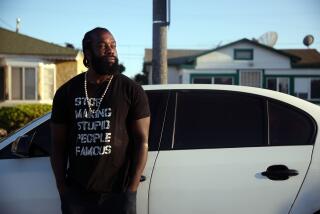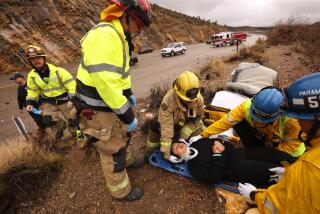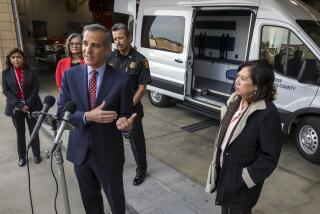Curbing the Obstructionists
A child is pulled unconscious from a pool, or an elderly man suffers the crushing chest pressure of a heart attack. The family calls 911 and everyone waits for the paramedics to arrive. And waits. The ambulance, you see, is waiting too. It’s sitting in traffic, not allowed to turn its siren on.
These scenarios could happen: The Los Angeles Fire Department is considering guidelines that would force firetrucks and ambulances to slow down and in heavy traffic to wait for a chance to move ahead.
The policy is meant to cut down on accidents with motorists who don’t clear the way because they can’t hear the siren while they’re on the cellphone or who just don’t care or simply don’t know what to do. We’ve all seen the drivers who stop dead, alone in the left lane, while a firetruck bears down.
The Fire Department must protect its firefighters and other motorists from injury, but the need for this particular policy is unclear. Over three years, the department’s crews got into more than 800 accidents with other vehicles, a scary figure. But even fire officials have no idea how many of those happened on the way to emergencies. They include such minor incidents as motorists dinging a parked firetruck. During that time, the department responded to about 2 million calls but only 10 firefighters were injured in traffic accidents.
Whatever the department decides, the core problem remains unsolved: California motorists’ galling reluctance to get out of the way. Though Los Angeles’ traffic jams might aggravate the situation, this is a statewide issue and it calls for an effort at the state level. Motorists who fail to yield endanger lives no less than a drunk driver. They cause traffic accidents and deprive others of potentially lifesaving help. Yet drivers pay higher fines for illicitly using a carpool lane than for obstructing an emergency vehicle.
Police often accompany firetrucks and ambulances in some neighborhoods on the Fourth of July and New Year’s Eve, when an emergency call is likely to mean an accompanying arrest, but the LAPD has too little staff to provide continuing assistance.
Getting information into the hands of motorists would help. Notices attached to yearly auto registration forms should review correct behavior: Signal right, then pull over carefully, getting as close to the right curb as possible. Stop until the firetruck or ambulance has passed. Requiring people to sign the notices in order to register their cars would help ensure they read them.
Video or still cameras attached to the trucks might take pictures of offenders’ license plates. And penalties should be high enough to make drivers shudder, and even turn down the stereo to listen for sirens.
More to Read
Sign up for Essential California
The most important California stories and recommendations in your inbox every morning.
You may occasionally receive promotional content from the Los Angeles Times.









